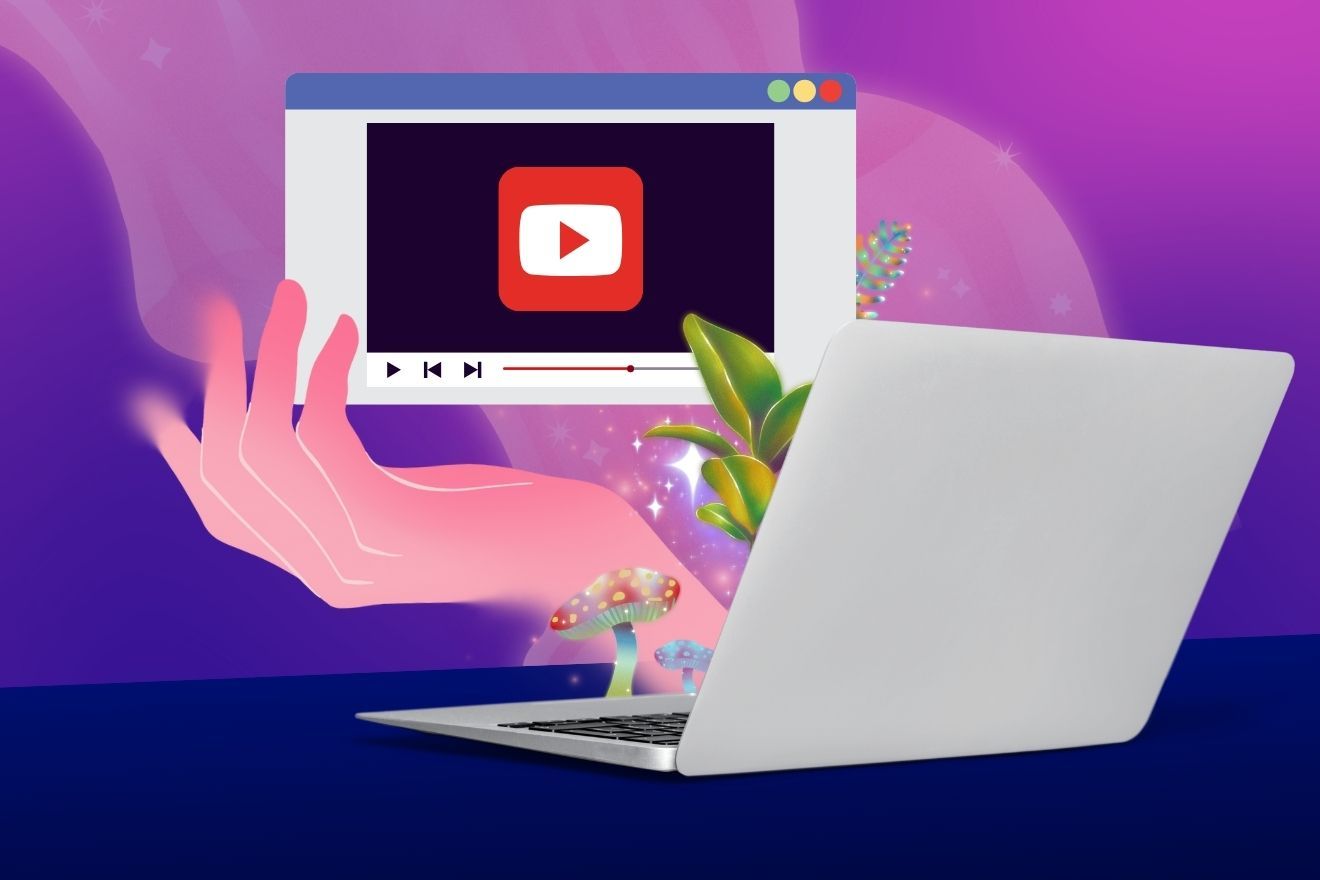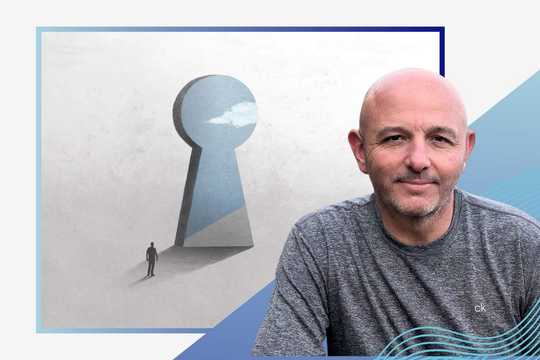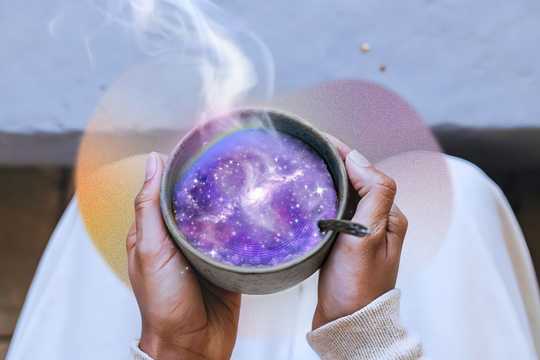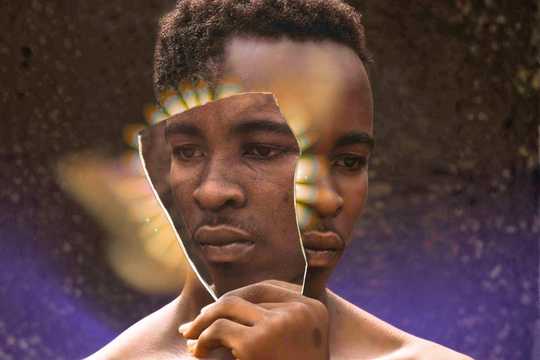Are you curious about how psychedelics affect the brain? Whether you’re interested in LSD, psilocybin, MDMA, or Ayahuasca, there are amazing YouTube videos that help explain the science of how each psychedelic works.
From animations that visualize brain chemistry to expert presentations that make complex neuroscience accessible, these videos help demystify how each psychedelic works. If you’re ready to explore the fascinating world of altered states, neurotransmitters, and consciousness, this mind-expanding list is for you!
DMT and Ayahuasca (Dimethyltryptamine)
Often called the “spirit molecule,” DMT is a naturally occurring psychedelic found in certain plants and even produced in small amounts by the human brain. DMT induces short but incredibly intense, otherworldly experiences. Ayahuasca, a traditional Amazonian brew made from DMT-containing plants, provides a more extended, immersive journey guided by Indigenous shamans. Both DMT and Ayahuasca are associated with profound mystical experiences, personal insights, and potential therapeutic benefits for mental health and addiction.
Here is a list of YouTube Videos about DMT and Ayahuasca and how each psychedelic works:
1. DMT and the Psychedelic Renaissance
Nick Glynos presents on DMT and the Psychedelic Renaissance at TEDxUofM. He introduces DMT (N, N-Dimethyltryptamine) as a naturally occurring psychedelic found in humans and many plants. Nick describes its powerful effects, which include intense visual hallucinations, encounters with otherworldly entities, and feelings of complete disembodiment.
He then discusses the scientific unknowns surrounding DMT, including its role in the human body and whether it contributes to normal perception, dream states, or even psychiatric conditions.
“The presence of naturally occurring DMT in the body represents a great unsolved mystery and a tangible link between altered states of consciousness and human physiology, so I suggest we take the advice of William James…let’s adopt the psychedelic experience as a tool to study consciousness and let’s determine if DMT the only psychedelic known to be produced by humans plays a role in the most fundamental and important mystery of science human consciousness.”
- Watch Nick Discuss DMT and the Psychedelic Renaissance
2. Dimethyltryptamine (DMT): What You Need To Know
The Drug Classroom gives a good explanation of DMT Chemistry in this video. It describes DMT as a powerful, naturally occurring psychedelic used for centuries, often inhaled or consumed in ayahuasca preparations. It discusses the effects of DMT, including visual hallucinations, euphoria, and spiritual experiences, to anxiety, paranoia, and increased heart rate.
The video shares that a typical DMT experience starts with a rapid “rush” phase, followed by dissociation from the body and, at peak levels, entry into alternate dimensions. It discusses how DMT has been explored for potential medical uses, particularly in treating depression, anxiety, and addiction, though research remains limited. It talks about how DMT is a key ingredient in ayahuasca, a brew with a long history of use in South American shamanic practices.
- Watch the Drug Classroom Explain DMT Chemistry
3. Ayahuasca & Brain Change: From Pharmacology to Psychology
This video is a recording of Sam Gandy, PhD Candidate at the University of Aberdeen, presenting at the AYA2014 conference hosted by The International Center for Ethnobotanical Education, Research & Service (ICEERS).
The video explores how ayahuasca affects the brain, including its pharmacological activity, receptor interactions, brain regions, and impact on brain waves, neuroplasticity, and neurogenesis — especially in relation to depression and addiction. Sam also connects these neurological effects to broader changes in personality and examines ayahuasca’s potential impact on individuals and society—from the microscopic to the macro scale.
- Watch Sam Discuss How Ayahuasca Affects the Brain
Gain Insights into DMT and Ayahuasca
- Uncover the Truth About DMT — What to Know About This Powerful Psychedelic
- Explore Our DMT Substance Guide
- Discover Our Ultimate Ayahuasca Guide: Your Top 7 Questions Answered
MDMA (3,4-Methylenedioxymethamphetamine)
Commonly known as Ecstasy or Molly, MDMA is a synthetic substance that enhances mood, empathy, and emotional connection by flooding the brain with serotonin, dopamine, and oxytocin. While often associated with raves and music festivals, MDMA is now at the forefront of clinical research for treating PTSD, depression, and social anxiety. Scientists are exploring its ability to help people process trauma with reduced fear, making it a promising tool in psychedelic-assisted therapy.
Here are a few YouTube videos about MDMA that explain how this psychedelic works.
1. Your Brain on MDMA
In this 2-minute video, AsapSCIENCE describes how MDMA is a widely used drug that increases serotonin, dopamine, and norepinephrine levels in the brain, creating intense feelings of happiness, social connection, and empathy. The video describes the changes in serotonin that occur and its potential treatment for PTSD and anxiety due to its ability to enhance brain communication.
- Watch AsapSCIENCE Teach You What MDMA Does to Your Brain
2. MDMA (Ecstasy): Mechanism of Action & Metabolism
If you’re looking for a deeper dive into MDMA, Kevin Tokoph, PT, DPT of Catalyst University, gives a thorough explanation of a scientific breakdown of MDMA’s pharmacology, explaining how it produces its effects and how the body processes it.
He starts by highlighting that MDMA is a synthetic drug and then shifts to MDMA’s effects. The video details how MDMA alters neurotransmitter activity and emphasizes that metabolism plays a crucial role in MDMA’s effects and duration, as well as potential risks related to neurotoxicity.
- Watch Catalyst University’s In-Depth Look at MDMA’s Mechanism of Action, Metabolism, and Neurochemical Pathway
3. How Does MDMA Heal or Harm? Basic Science of Therapeutic Potential
Psychedelic Support hosts a Monthly Speaker and Professional Networking Series where a distinguished guest shares knowledge about the latest on psychedelics. In May 2024, we had Matthew Baggott, PhD speak about the basic science and mechanisms of MDMA’s therapeutic potential and unwanted side effects.
Dr Baggott goes over MDMA clinical trials in healthy volunteers, animals, and cells and their controversies. He informs about whether the MDMA effects persist beyond the first few hours. Matthew shares new data on novel molecules that seem to retain MDMA’s core therapeutic effects while potentially decreasing side effects. Lastly, he discusses 5-MAPB as a starting point for new entactogens.
- Watch Matthew Baggott, PhD discuss the Potential Healing Science of MDMA
Discover More Facts About MDMA
- Learn About Where MDMA Comes
- Feed Your Curiosity with Our MDMA-Assisted Therapy Guide
- Read More About MDMA Therapy for PTSD
Psilocybin (Magic Mushrooms)
Psilocybin is the psychoactive compound found in magic mushrooms, producing altered perceptions, deep introspection, and mystical experiences. Once ingested, psilocybin converts into psilocin, which interacts with serotonin receptors in the brain to create profound shifts in consciousness. Indigenous cultures have used psilocybin for centuries in spiritual and healing ceremonies, and modern research suggests it can help treat depression, anxiety, and addiction.
Here are a few YouTube videos about Psilocybin that explain how this psychedelic works:
1. Your Brain On Shrooms
In this short two-minute video, AsapSCIENCE explains how psilocybin mushrooms affect the brain. It focuses on their active ingredient, psilocybin, and its transformation into psilocin, which increases serotonin activity and alters perception.
The video highlights scientific findings, including how psilocybin may temporarily reorganize brain connections, reducing self-conscious thinking and enhancing creativity. AsapScience shares that, unlike many recreational drugs, psilocybin is not considered addictive and has low toxicity. Research suggests it causes less harm than other substances.
- Watch This 2-Minute Video About Your Brain on Shrooms
2. The Cognitive Neuroscience of Psychedelic Drugs
This video is a recording of Fred Barrett, PhD, Associate Director of the Johns Hopkins Center for Psychedelic & Consciousness Research, presenting at the UC Davis Psychedelic Summit 2023 in Sacramento, California.
Dr Barrett discusses the acute effects of psilocybin on complex cognition, working, and episodic memory. He explains how psilocybin therapy increases cognitive and neural flexibility and may reduce amygdala reactivity in patients with Major Depressive Disorder (MDD).
- Watch Dr Barrett Delve into the Cognitive Neuroscience of Psychedelic Drugs
3. The Science of Psilocybin and Its Use to Relieve Suffering
This video is of psychopharmacologist Roland Griffiths’ TEDMED talk. In it, he discusses how psilocybin facilitates a deep sense of interconnectedness and ultimate reality, similar to naturally occurring mystical experiences, which may have profound implications for consciousness, ethics, and human well-being. Griffiths argues that scientific exploration of these experiences could not only revolutionize mental health treatments but also deepen our understanding of human morality, possibly playing a critical role in our collective survival.
- Watch Roland Griffiths’ Presentation on the Science of Psilocybin and Its Use to Relieve Suffering
Explore the Therapeutic Potential of Psilocybin
- Get Informed About Where Psilocybin Comes From
- Find Out More About Psilocybin and Major Depressive Disorder
- Read Our Psilocybin-Assisted Therapy Guide
LSD (Lysergic Acid Diethylamide)
Also known as “acid,” LSD is one of the most potent psychedelics, famous for its ability to alter perception, distort time, and induce intense visual and auditory hallucinations. This psychedelic works by interacting with serotonin receptors, creating a heightened sense of awareness and deep cognitive shifts. Initially synthesized in 1938 by Swiss chemist Albert Hofmann, LSD played a major role in the counterculture movement of the 1960s, and researchers are now studying it for its potential to treat anxiety, depression, and creative blocks.
Here are a few YouTube videos about LSD that explain how this psychedelic works:
1. Elements of Science | Lysergic Acid Diethylamide
In this four-minute video hosted by the MIND Foundation, Abigail Calder, MSc, describes LSD: what it is, its discovery and history, how it affects the mind, and its potential to improve psychotherapy. She discusses that current scientists are studying its impact on serotonin 2A receptors and brain connectivity, suggesting lasting therapeutic effects. Though promising, research remains cautious, with ongoing studies exploring its potential benefits and risks.
- Watch the MIND Foundation’s Scientific Explanation of Lysergic Acid Diethylamide
2. Here’s What Happens to the Human Brain on LSD
This short video shows images of a brain on LSD. It includes text descriptions of a study that involved 15 volunteers who were injected with LSD and had a brain scan after 70 minutes. The volunteers completed a follow-up placebo test. The video shows LSD enhances communication across the brain and has the potential to help those with depression and addiction.
- Watch What Happens to the Human Brain on LSD
3. How LSD and Shrooms Could Help Treat Anxiety, Addiction and Depression
This VOX video discusses the potential medical benefits of psychedelics, particularly psilocybin, in treating addiction and mental health disorders. It follows Alana, a participant in a controlled study who quit smoking after a psilocybin session, highlighting how the drug induces profound, transformative experiences.
The video talks about how researchers suggest that psychedelics increase brain connectivity, helping break entrenched thought patterns associated with addiction, anxiety, and depression. It explains how historical stigma and lack of pharmaceutical incentives stalled research, but private funding is now reviving interest in these substances.
Delve Deeper into LSD
- Dive Into Our LSD Substance Guide
- Broaden Your Knowledge by Finding Out Whether LSD Can Improve Your Learning Potential
- Feed Your Mind by Reading Our Top 10 Psychedelic Support Articles About LSD
Psychedelics are a fascinating and rapidly evolving field of study, offering profound insights into consciousness, mental health, and personal transformation. These twelve YouTube videos provide just a glimpse into these powerful substances’ science, history, and potential.
Follow your Curiosity
Sign up to receive our free psychedelic courses, 45 page eBook, and special offers delivered to your inbox.But there’s so much more to explore! If you’re curious to deepen your understanding, check out our free articles and courses, where we break down complex topics into engaging, accessible lessons.
Whether you’re here for personal growth, academic curiosity, or professional development, your journey into the world of psychedelics is just beginning. Keep learning, keep questioning, and let’s explore the mind together!






